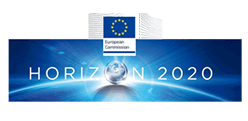
Granta Design, UK
Granta Design Ltd, an SME, was spun out from the University of Cambridge, producing and selling software and materials data to enable others to manage materials information and education. Granta’s core business involves the design and development of software products including various tools for eco-design, restricted substances, critical materials assessment, information/data management, materials selection and substitution, several of which integrate with CAD/CAE/PLM. Originating as a materials education software company, Granta continues to play a significant role in this area as well providing software and teaching resources to over 1,000 institutions world-wide, Granta continue to host the Materials Education Symposia which are held annually in the UK, US and Singapore and represent the leading international focal point for educators within the materials domain.
Granta also hosts the Environmental Materials Information Technology consortium, a group of large advanced manufacturing companies who help to determine Granta’s development priorities in response to emerging environmental needs.
Granta contributes to numerous networks and standardization bodies and supports a number of industry standard commercial databases for materials such as metals, composites, polymers, and medical devices.
Granta also produces and maintains several leading data products including Materials Universe (a database of over 4,000 commercially available engineering materials including technical, ecological and cost attributes for each material and its associated processes) and the Product Risk database which incorporates one of the leading resources on restricted substances as well as critical and conflict minerals risks and data needed for streamlined life cycle analysis. Granta supports numerous collaborative projects by providing a centralized materials information management system for the project to enable the pooling and consolidation of project knowledge which would otherwise be dispersed amongst the partners, this approach enables standardization and capitalizes on the value in the project by avoiding duplication of effort and maximizing visibility of results both within the consortium and to external stakeholders.

